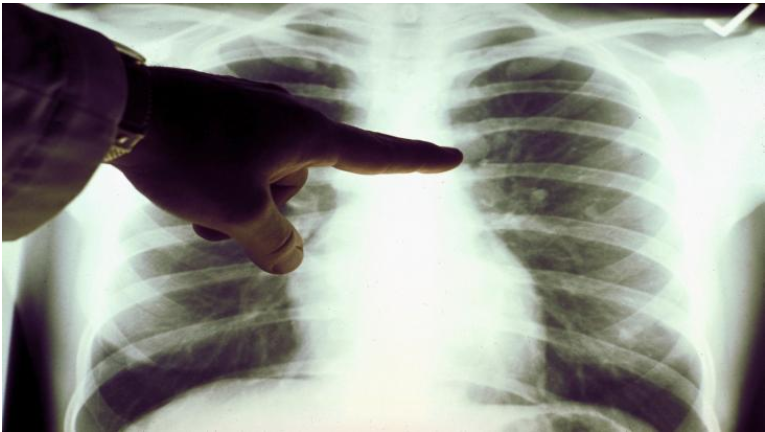? How to protect yourself from lung cancer
Perhaps we remember a scene from a play by the artist Samir Ghanem, who says to the patient: "Take a breath.. Seb.. breath..breath.. Saturday, you imp." In fact, he was checking his respiratory system if there was any problem, but in a comic way.
Our respiratory system (lungs) are located inside the chest cavity, and the lungs are made of spongy tissue filled with air, and they perform the function of exchanging oxygen and carbon dioxide between blood and air.
* The most prevalent malignancy
The lungs can be infected with many diseases, and perhaps the most dangerous and insidious of these diseases is cancer; Lung cancer is one of the most common cancers in the world (after skin cancer, breast cancer in women, and prostate cancer in men).
Lung cancer is responsible for a third of all cancer deaths in general. It caused the death of more than 157,000 people in 2010 in the United States of America alone, and
this number exceeds the deaths of colorectal, breast and prostate cancers combined.
The hope of someone who gets lung cancer to survive does not exceed five years after diagnosis, because cancer cells destroy the healthy tissues that surround them, and then spread to other places.
* Causes and Symptoms
In fact, human civilization has not invented anything worse than cigarette smoking 5,000 years ago. This invention has brought woes and diseases to people what nuclear and hydrogen bombs did not do; As about 90% of lung cancers are caused by tobacco smoke, 3% are caused by passive or indirect exposure to smoking, and 7% are caused by inhaling asbestos, arsenic, nickel, chromium or radon dust, air pollution, or viral infection.
Cigarette smoke contains more than 4,000 chemicals, most of which are accused of causing cancer, such as radioactive isotopes of radon, benzopyrene, and others. Lung cancer.
Signs and symptoms of lung cancer take years to develop, and may not appear until the disease is late; Among the symptoms of lung cancer that the patient notices in the chest:
1. Coughing, especially if it persists or becomes severe or accompanied by blood.
2. Pain in the chest, shoulder or back, and may appear in one of four people with lung cancer.
3. Any change in the color or size of the sputum, especially if it has some blood on it.
4. Shortness of breath caused by the trapping of air in part of the lungs within the tumor.
5. Coarse sounds with each breath (squeak).
6. Frequent lung problems, such as bronchitis or pneumonia.
If the original lung cancer has spread, a person may feel symptoms elsewhere in the body. Common places where lung cancer has spread include other parts of the lungs, lymph nodes, bones, brain, liver and other parts of the body.
https://www.sehatok.com/%D8%AF%D9%88%D8%A7%D8%A1-%D9%81%D9%8A-%D8%BA%D8%B0%D8%A7%D8%A1/%D9%83%D9%8A%D9%81-%D8%AA%D8%AD%D9%85%D9%8A-%D9%86%D9%81%D8%B3%D9%83-%D9%85%D9%86-%D8%B3%D8%B1%D8%B7%D8%A7%D9%86-%D8%A7%D9%84%D8%B1%D8%A6%D8%A9%D8%9F?fbclid=IwAR3Aa7G35A5qhjlZCVqOcjYbNb28VnDaBhbM_AzpOTCTH_ii8OlSTvgs3WY


